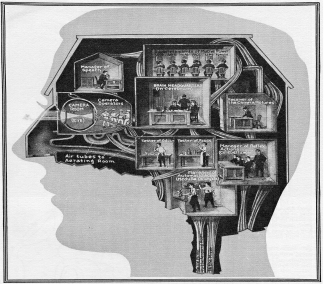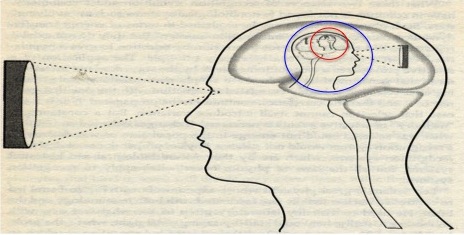The idea of a little man in our heads that sees the images (and words) we see and understands these words and images for us. During the 1920s and 1930s, it became a widely used way depicting how the brain worked in popular works, such as children’s dictionaries (see first figure below). The flaw in this proposal is that it is not an explanation of how we understand some thing like imagery, but just a repetition of the original problem. It leads to the problem of infinite regression: who or what controls the controller, the answer to which is another homunculus and so on, like a set of Russian dolls (see second figure below).

